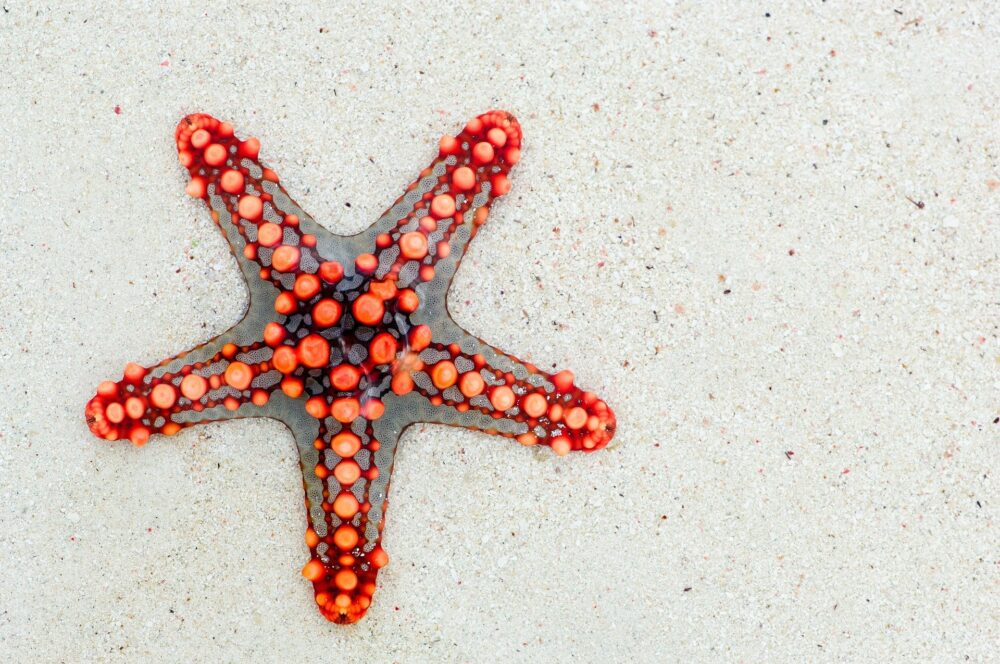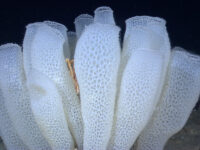Of all species living in marine environments on Earth, the relatively inconspicuous starfish may appear to live a simple existence on the seafloor. However, these organisms demonstrate striking abilities to perceive their environment, one of many characteristics that has led to their success as a species. This success is evident in their diversity — there are around 2,000 different species of starfish with widely varying appearances and sensory structures. One species known as the sunstar can even have up to 40 arms. This incredible diversity has attracted the attention of animal behavior researchers, who explore just how these fascinating creatures perceive and survive in their environments.
Although the average starfish appears to have a relatively simple anatomy of five connected arms, the physiological basis for sensation and perception in these animals is incredibly complex and often difficult to study. These senses include touch and chemical sensation, such as taste and smell. Fascinatingly, starfish are even capable of vision by using a compound eye structure present on the tip of each arm, and preliminary research indicates they may have some form of hearing and some form of detecting electrostatic and magnetic fields. The cumulation of these many sensory pathways makes it challenging to isolate a single sense through physiological and behavioral experimentation.
Fascinatingly, starfish are even capable of vision by using a compound eye structure present on the tip of each arm.
Despite these experimental difficulties, vision is one of the more studied and most well understood senses that starfish possess. Their visual structure, known as an ocelli or eye spot, has two known cell types: pigment cells and photoreceptors. In combination, these cells compose optical units, or ommatidia, and are thought to create one pixel each for an image. For several species of starfish, including blue sea stars and crown-of-thorns starfish, their visual sense has been optimized for immobile red and green structures. These colors match the red and green coral boulder habitat that a starfish would experience in their day-to-day environment. Furthermore, the location of the eye spot at the end of each arm allows starfish to shift and stabilize their gaze by bending the tips of their arms during a general arm movement. This ability is what allows the starfish to perceive the surrounding environment and navigate difficult terrains.
Although starfish vision is well researched, other sensations are more challenging to study. For example, starfish chemosensation, which refers to the animal’s ability to perceive chemicals through taste or smell, is a more difficult sense to isolate. Researchers have long since debated over which cells are required for chemosensation and where these cells are located. Furthermore, if the suspected chemosensitive cells are removed, some researchers argue that other sensations may also have been eliminated through unintentional damage, complicating the results of the study.
The location of the eye spot at the end of each arm allows starfish to shift and stabilize their gaze by bending the tips of their arms during a general arm movement.
Despite these challenges, the sense of smell in starfish can be assessed behaviorally through analysis of foraging behavior. Researcher Juan Castilla at the Pontifical Catholic University of Chile used this experimental approach to study olfaction and prey-finding behaviors. Starfish were placed into y-shaped mazes, and researchers examined their ability to locate prey animals or food-related chemicals. A starfish was placed at one end of the y-shaped maze and a food item at the other. The sea star’s ability to locate the prey was then analyzed under varying conditions to examine its sensation of prey chemicals. Another technique to learn about the organism’s olfactory capabilities is to investigate specific receptors in the olfactory system, identifying and characterizing the physical and molecular mechanisms at play.
Beyond learning about the fascinating capabilities of starfish and the molecular basis for perception in these species, there are important applications for this knowledge. Crown-of-thorns starfish are the primary biological effector for coral cover loss to the Australian Great Barrier Reef. One way to protect these reef systems is to utilize knowledge of starfish sensory sensation to develop methods for population control. From foraging to reproduction, olfaction is essential for the survival of starfish species like the crown-of-thorns, so knowledge regarding olfactory receptors is useful to control the spread of this particular starfish population. In this way, research regarding starfish sensation serves a vital role in preventing further damage to a beautiful and delicate ecosystem. Not only is the research regarding these surprisingly capable organisms is beyond fascinating, it is also incredibly relevant for the protection of many of the valuable and magnificent locations on Earth.
BMC Genomics (2017). DOI: 10.1186/s12864-017-3793-4
Integrative and Comparative Biology (2017). DOI: 10.1093/icb/icx086



